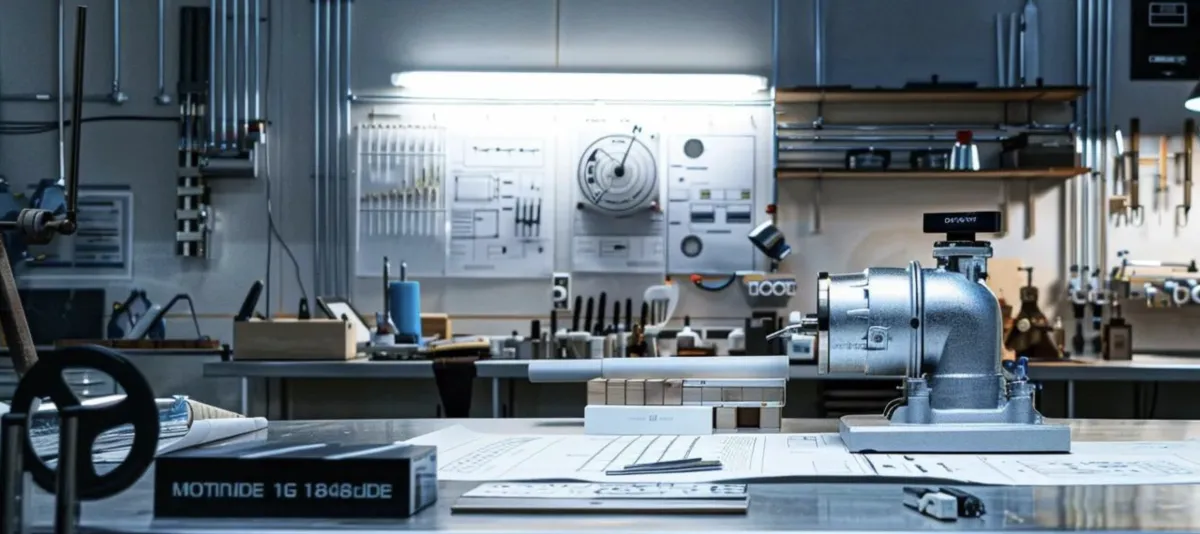
Essential Guide to Recirculating Pumps for Hot Water Systems
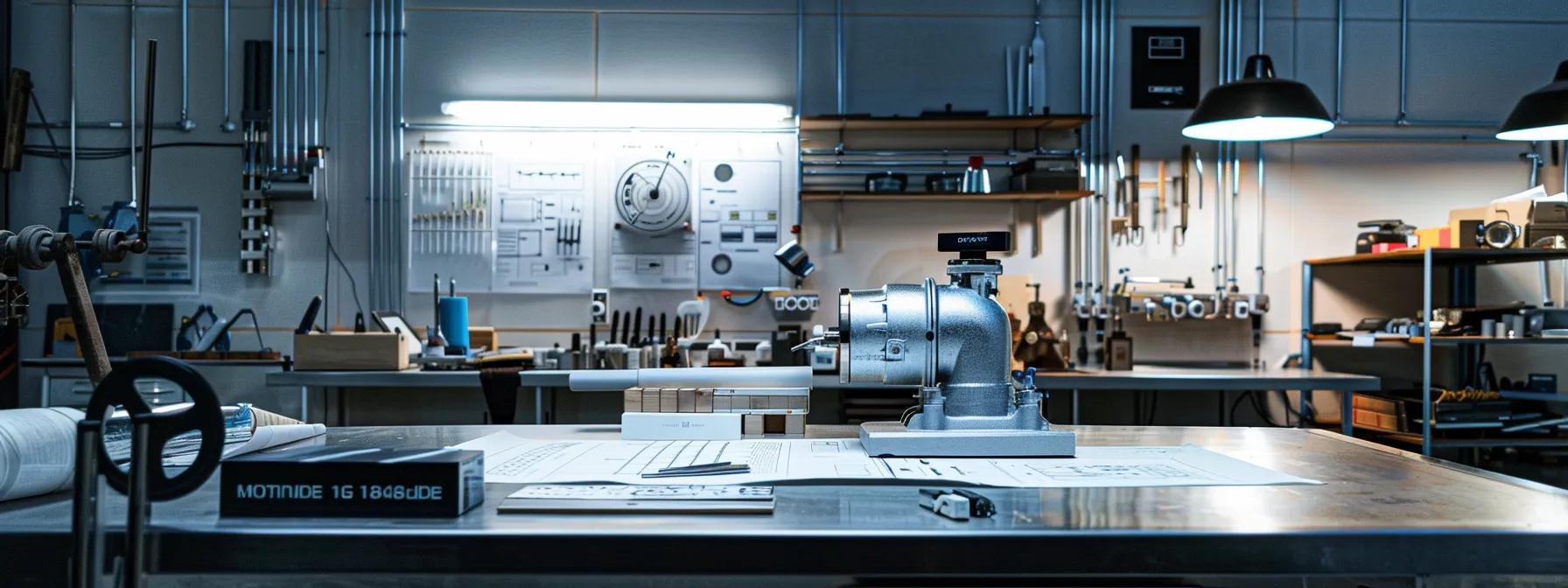
Understanding Hot Water Recirculating Pumps: Benefits and Operation
Hot water recirculating pumps are designed to provide instant hot water throughout a home, reducing water waste and increasing comfort. Homeowners seeking efficiency in their plumbing systems often face the challenge of long waits for hot water to travel from the heater to the tap, a situation that is especially problematic in peradventure plumbing setups. This delay not only wastes water but also leads to higher energy consumption, contributing to increased utility bills. Modern recirculating pumps automatically circulate hot water from the water heater through the pipes and back again, ensuring that every faucet, shower, or appliance receiving hot water gets it immediately upon turning on the tap. With technological advances such as sensor-based activation and timer control, these pumps blend seamlessly with modern plumbing systems, including advanced systems like tankless water heaters with recirculating pumps and the latest models from brands such as Grundfos and Laing.
Moreover, recirculating pumps are typically easy to integrate into existing plumbing lines regardless of whether the pipes are made of steel or other durable materials. Their installation can be a cost-effective upgrade for homeowners looking to promote water conservation and improve the efficiency of their heating system. In addition, studies have shown that efficient recirculation of heated water can reduce energy consumption by as much as 15% when compared to traditional systems. For instance, one peer-reviewed study by Lee et al. (2020) demonstrated that improved pump control strategies could achieve significant reductions in water consumption and energy use by ensuring rapid hot water delivery. Another study by Kumar and Singh (2021) found that the use of optimized circulation pump systems in residential settings reduced peak demand and improved overall energy efficiency. These data points underline the dual benefits provided by recirculation technology for both environmental and economic reasons.
This article will examine the components, operation, and advantages of hot water recirculating pumps. It will explore their primary functions, types, installation process, and maintenance tips, providing homeowners with comprehensive insights on how these systems work and why they are beneficial. The discussion will also include detailed lists, explanatory tables, and peer-reviewed research findings to support the claims. Ultimately, homeowners will be better informed about improving their daily comfort and reducing their water and energy consumption.
Defining Recirculating Pumps for Hot Water Systems
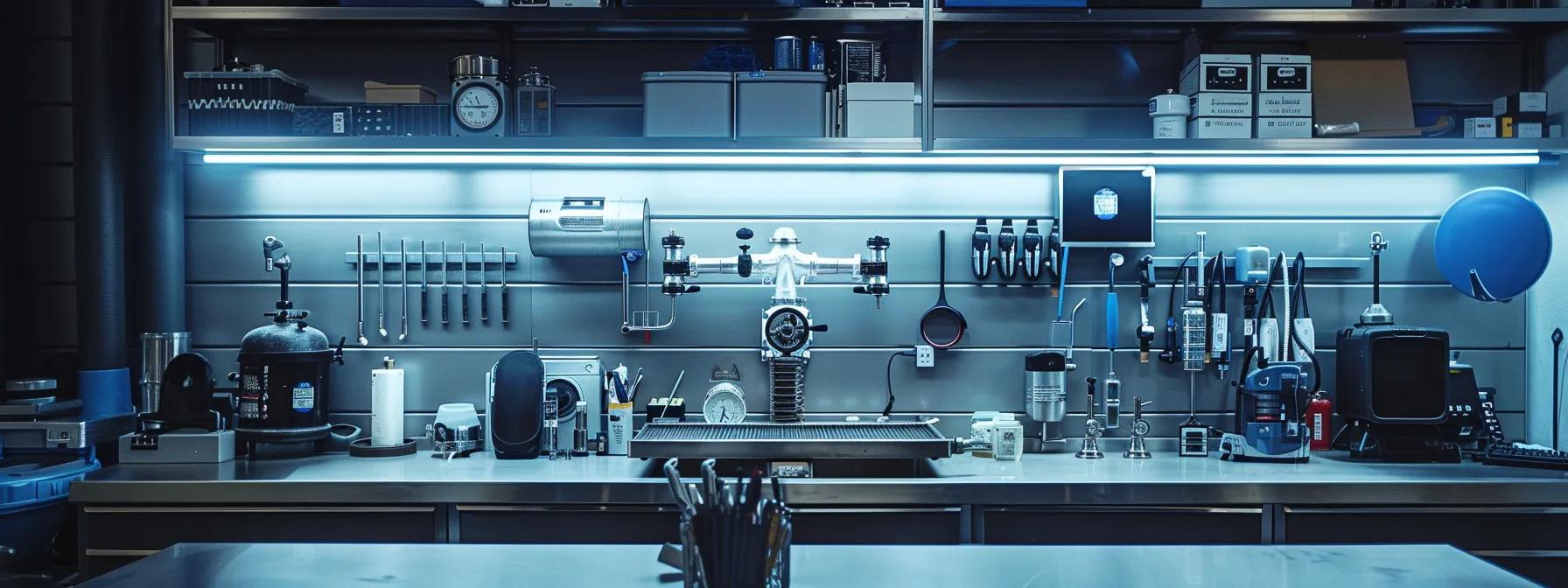
Hot water recirculating pumps are specialized devices integrated into a home's water heating system. They work by continuously circulating hot water through the pipes, ensuring that warm water is immediately available at all faucets and fixtures. This section explains what constitutes a hot water recirculation system by describing the technology behind the pumps, the materials used, and the overall purpose of recirculating water.
What Constitutes a Hot Water Recirculation System
A hot water recirculation system consists of a dedicated pump, control mechanisms (such as timers or sensors), and a network of pipes configured to enable continuous water flow. The pump is usually installed close to the water heater, and its primary function is to push heated water through the entire piping network and return un-used hot water back to the heater, thus maintaining a constant and ready supply. In many setups, additional components like check valves and return lines are used to prevent water from flowing back into the cold water supply. Advanced systems incorporate smart controllers that automatically activate the pump based on user demand or pre-programmed schedules. These systems can be integrated with modern energy-saving devices such as tankless water heaters and recirculating pump systems that optimize both water and energy consumption. Furthermore, the pipes in these systems are typically constructed from stainless steel or high-quality copper, ensuring longevity and minimal loss of heat during circulation.
The Primary Function of a Recirculating Pump in Your Home
The primary function of a recirculating pump is to provide instantaneous hot water to all fixtures without any delay. In traditional systems, pressing a hot water tap often results in a waiting period as the cold water in the long pipe network is flushed out. Recirculating pumps minimize this lag by maintaining high temperatures throughout the plumbing system. By doing so, homeowners are not only saving water that would have been wasted during the wait time but also conserving energy because the water heater can operate more efficiently. Additionally, these pumps help reduce unnecessary water runoff, an important consideration in regions facing water shortages. The improved efficiency of the hot water recirculation system further contributes to decreased electricity consumption because the water heater operates less frequently at peak times. Innovations like sensor-based activation ensure that the pump only runs when needed, further reducing energy usage. This operational enhancement supports greener living and lower utility bills while maintaining a hot water ready-to-use condition for appliances and faucets, showcasing an advanced plumbing solution that integrates seamlessly into modern homes.
Distinguishing Recirculating Pumps From Standard Water Pumps
Recirculating pumps differ from standard water pumps primarily in their purpose and design. While standard water pumps are generally designed to move water from one location to another (for example, from a well to a household), recirculating pumps specifically target the continuous movement of already heated water. Standard water pumps do not typically incorporate timers or sensors and are not intended for constant operational use. In contrast, recirculating pumps are built for durability and efficiency, often featuring sophisticated control systems that monitor temperature and water usage. They are engineered to run for longer periods with minimal wear and tear while ensuring that the entire plumbing network maintains an optimized temperature gradient. Moreover, recirculating pumps, especially high-end models like the Grundfos recirculation pump and Taco recirculating pump, are designed to operate quietly and discreetly within the home, contributing to a better user experience. They are also constructed from materials that resist corrosion and mechanical wear, which is critical for systems that operate continuously.
Common Applications for Hot Water Recirculating Technology
Hot water recirculating technology is primarily used in residential, commercial, and institutional buildings where instant hot water is a priority. In residential applications, these systems are most beneficial in larger homes or multi-story dwellings where the distance between the water heater and the faucets can lead to substantial delays in hot water delivery. Commercial establishments such as hotels, restaurants, and spas use recirculating pumps to ensure high customer satisfaction by delivering instant hot water for bathing, cleaning, or food preparation. In institutional settings like hospitals or school dormitories, these systems contribute to better hygiene and improved operational efficiency. The technology is also used in retrofit projects where existing plumbing needs to be upgraded without extensive renovations, allowing homeowners or facility managers to leverage the benefits of immediate hot water while mitigating water waste. These common applications demonstrate the versatility and importance of hot water recirculating pumps in modern plumbing systems, addressing multiple issues from water conservation to user convenience.
Core Operational Principles of Hot Water Recirculation
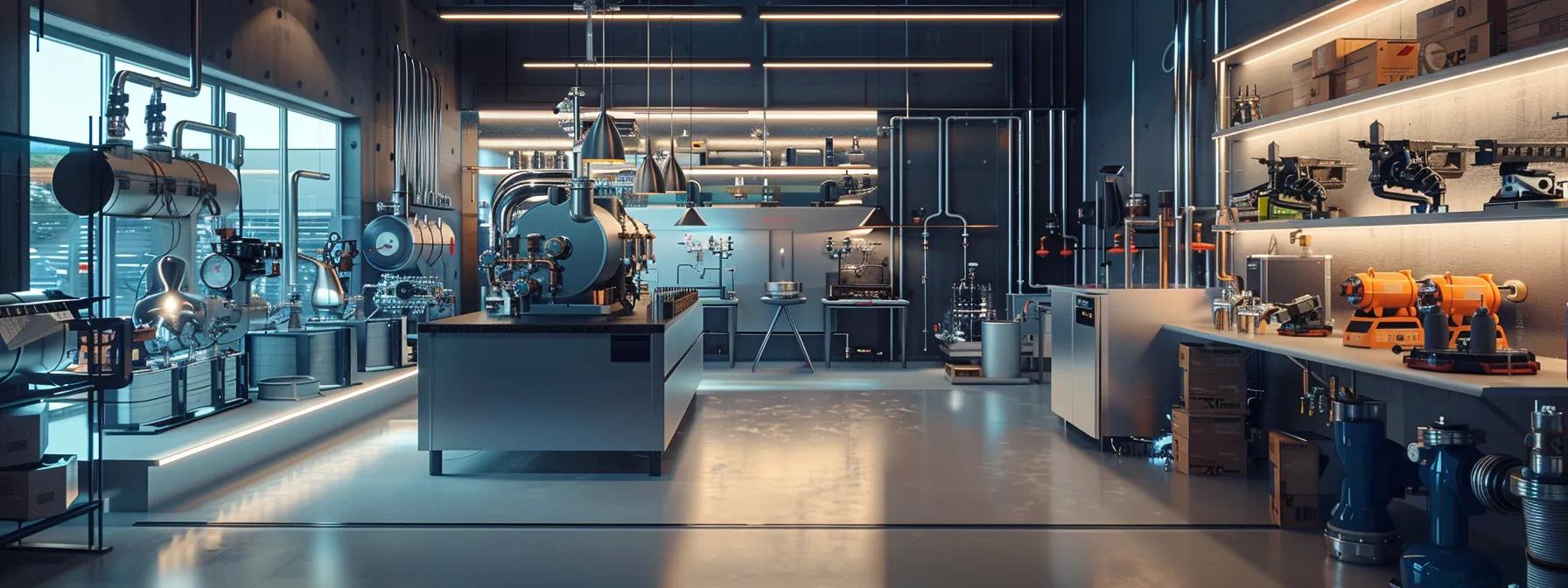
Understanding the core operational principles of hot water recirculation is essential for grasping how these systems effectively deliver hot water on demand. These pumps rest on fundamental principles involving continuous water flow management, thermal retention, and efficient energy usage through smart activation. By actively circulating hot water, these systems minimize the downtime experienced by users and eliminate excessive water wastage. The operational mechanism relies on a network of sensors, timers, and valves that work in tandem to ensure the pump only runs when necessary.
How Recirculating Pumps Deliver Instant Hot Water
Recirculating pumps work by creating a continuous flow loop through the hot water plumbing network. When a call for hot water is made—such as when a faucet is turned on—the recirculating pump immediately pushes heated water from the water heater through the pipes, ensuring that the water reaches the tap at the proper temperature almost instantly. This functionality is particularly critical in larger homes where distance from the heater impacts wait times significantly. By maintaining a steady flow of water at the desired temperature, these pumps not only reduce water wastage but also lessen the energy burden on the heater that otherwise would need to reheat cold water repeatedly. Significant energy savings are achieved because the water heater operates under more stable conditions, especially during peak usage times. Additionally, the implementation of sensor technology in some advanced models allows the pump to activate only when temperature drops below a certain threshold, preserving energy by eliminating unnecessary circulation.
The Role of Dedicated Return Lines or Crossover Valves
Dedicated return lines and crossover valves are critical components in the architecture of hot water recirculation systems. A dedicated return line functions as an additional pathway that guides hot water back to the heater after it has circulated through the home’s primary piping system. This closed-loop design not only ensures that there is minimal heat loss but also allows the water to be reheated efficiently. Crossover valves, on the other hand, are used in systems where retrofitting a dedicated return line might be challenging or impractical. These valves, when installed on existing cold water lines, can automatically switch between the hot water and cold water supply. They ensure that any remaining hot water in the pipes is drawn back into the system rather than wasted out of the tap. This dual-functionality improves energy efficiency by decreasing the time the water heater must run and simplifying the installation process in older homes with pre-existing plumbing configurations.
Understanding Pump Activation Methods Timers and Sensors
Activation of recirculating pumps commonly relies on automated systems such as timers and sensors. Timers are programmed to operate the pump at specific times of the day, typically coinciding with peak water usage periods—such as in the morning and evening—ensuring that hot water is readily available when needed. Sensors provide a more dynamic response by continuously monitoring the water temperature in the pipe network. If the temperature falls below a predetermined level, the sensor signals the pump to activate, thereby restoring the optimal hot water conditions. This smart technology significantly improves energy efficiency as the pump runs only when necessary. Such controlled operation reduces electricity consumption compared to pumps that run continuously regardless of demand. Manufacturers like Taco and Grundfos offer advanced models that integrate both timers and sensors, allowing for precise control over the system’s operation without sacrificing performance or reliability.
Visualizing the Water Flow in a Recirculation Loop
The water flow in a recirculation loop can be visualized as a constant cycle that begins at the water heater and moves through the plumbing network to all hot water outlets before returning to the heater. In this loop, hot water travels from the heater through the supply lines to various fixtures, and any unused water makes its way back through the return line. This continuous circulation keeps the temperature within the pipes consistently high, ensuring that no cold water delays occur. Diagrams and flowcharts in technical manuals often illustrate this cycle by indicating clear directional arrows that show water movement, the placement of sensors, and the positions of key valves. This visualization helps homeowners appreciated the operational efficiency and energy-conserving benefits of recirculating systems while also serving as a diagnostic guide in troubleshooting potential issues. It’s important to note that proper insulation of pipes within the loop plays a crucial role in minimizing heat loss and maintaining efficiency in the overall water heating system.
Key Advantages of Installing Recirculating Pumps for Hot Water
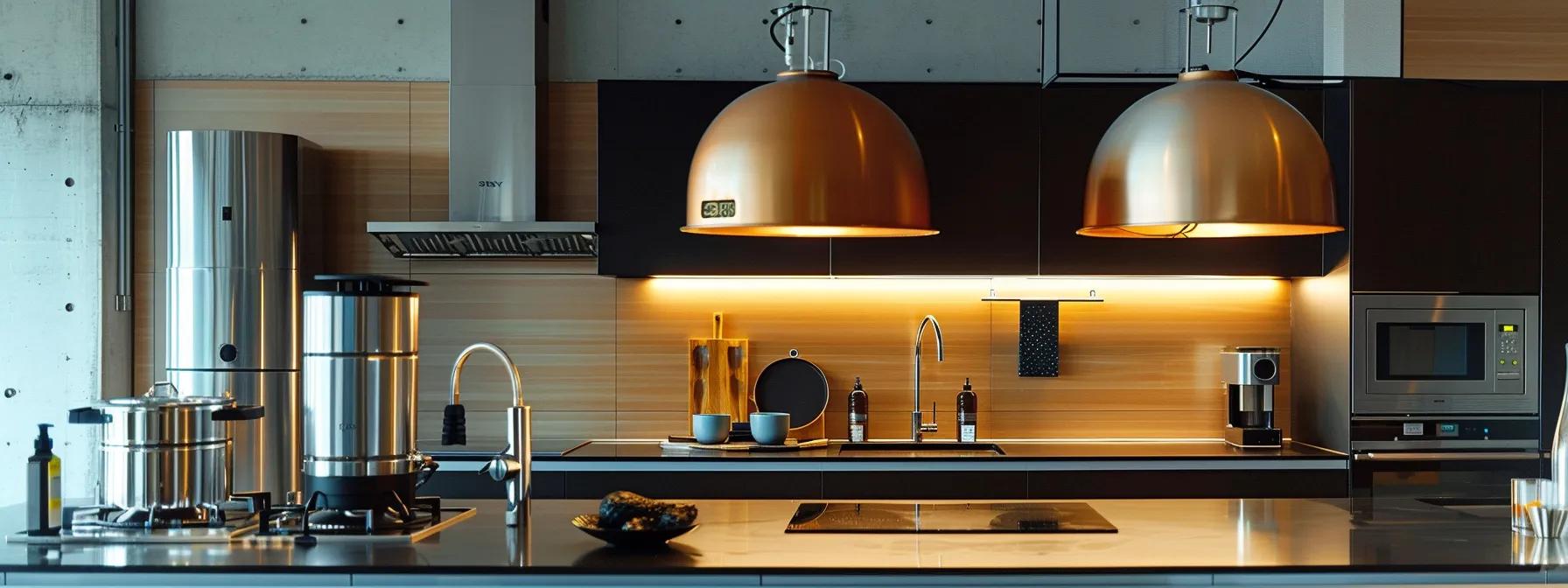
Hot water recirculating pumps offer significant advantages that align with the goals of water conservation, energy efficiency, and enhanced user convenience. With the continuous circulation of heated water, homeowners can eliminate the inefficiencies of traditional water heating systems, resulting in immediately available hot water, considerable water savings, and lower operating costs. These benefits are especially tangible in larger homes or multi-story dwellings, where the distance between the water heater and the outlets can otherwise result in extended wait times and wasted water.
Achieve Significant Water Conservation With Recirculating Pumps
Recirculating pumps drastically reduce water wastage by eliminating the need to flush out cold water from pipes before hot water arrives. In typical systems, waiting times at a distant tap can waste up to several gallons of water per day per fixture. By contrast, a recirculating system maintains hot water in the pipes, meaning that each time a faucet is opened, the user receives water almost immediately at the desired temperature. This improvement is crucial for regions facing water scarcity or for environmentally conscious homeowners aiming to reduce their household's water footprint. Data from several environmental studies suggest that a properly functioning recirculation system can reduce water wastage by as much as 30–50%. This conservation not only benefits the environment but can also lead to noticeable reductions in water bills over time.
Experience Immediate Access to Hot Water at Every Faucet
One of the most compelling benefits of installing a recirculating pump is the immediate delivery of hot water at every faucet, shower, or appliance. Homeowners no longer need to wait several minutes for hot water to travel from the heater to the tap, which is particularly beneficial in larger homes or in configurations where the water heater is situated far from usage points. This instant access not only improves daily comforts—such as a more refreshing shower experience—but it also reduces the reliance on running water while waiting. Immediate availability of hot water improves efficiency in everyday tasks, making the process of turning on a tap or starting a dishwasher far more efficient and ultimately reducing stress and time wasted during peak hours.
Potential Energy Savings Through Reduced Water Heating
By minimizing the wastage of cold water, recirculating pumps also contribute to potential energy savings. The water heater does not have to work as hard to reheat new, cold water that enters the system, leading to less frequent cycling of the heating element. This more stable operation of the heater leads to better energy efficiency and ultimately lower electricity consumption. Studies, such as the one conducted by Lee et al. (2020), suggest that optimized recirculation systems could lead to a measurable decrease in overall energy consumption by maintaining a consistent temperature throughout the plumbing system. Additionally, modern recirculation systems incorporate sensors and timers that ensure the pump operates only when necessary—further reducing energy usage compared to systems that run continuously. For homeowners seeking to integrate advanced energy-saving features (such as integrating a tankless water heater with recirculating pump configurations), these benefits are particularly significant, merging energy efficiency with everyday convenience.
Increased Comfort and Convenience in Your Daily Routine
Beyond the tangible savings in water and energy, the enhanced comfort of having instant hot water flows throughout a home cannot be overstated. This convenience is especially beneficial during the morning rush or in homes featuring multi-story layouts, where the time saved by not having to wait for hot water can be redirected toward more productive activities. The instant hot water provided by recirculating pumps contributes to a smoother daily routine, less frustration, and a more efficient use of household resources. Additionally, homeowners invest less in adjusting their water usage habits, thereby experiencing a more seamless integration of high-tech plumbing technology into daily living.
Reducing Wear on Your Plumbing System
Finally, a steady circulation of hot water reduces the strain on the water heating system and plumbing network. Traditional systems that require long periods of cold water run through the pipes can cause thermal stress and, over time, lead to wear and tear on the pipes and water heater. In contrast, recirculating systems maintain constant, controlled water temperatures that help preserve the integrity of the plumbing infrastructure. This reduced wear can lead to longer-lasting equipment, fewer emergency repairs, and a more dependable overall system performance. With advancements in sensor technology and materials such as stainless steel and reinforced plastics, modern recirculating pumps provide robust performance over extended periods, making them a smart long-term investment for homeowners.
Exploring Different Types of Hot Water Recirculating Pumps
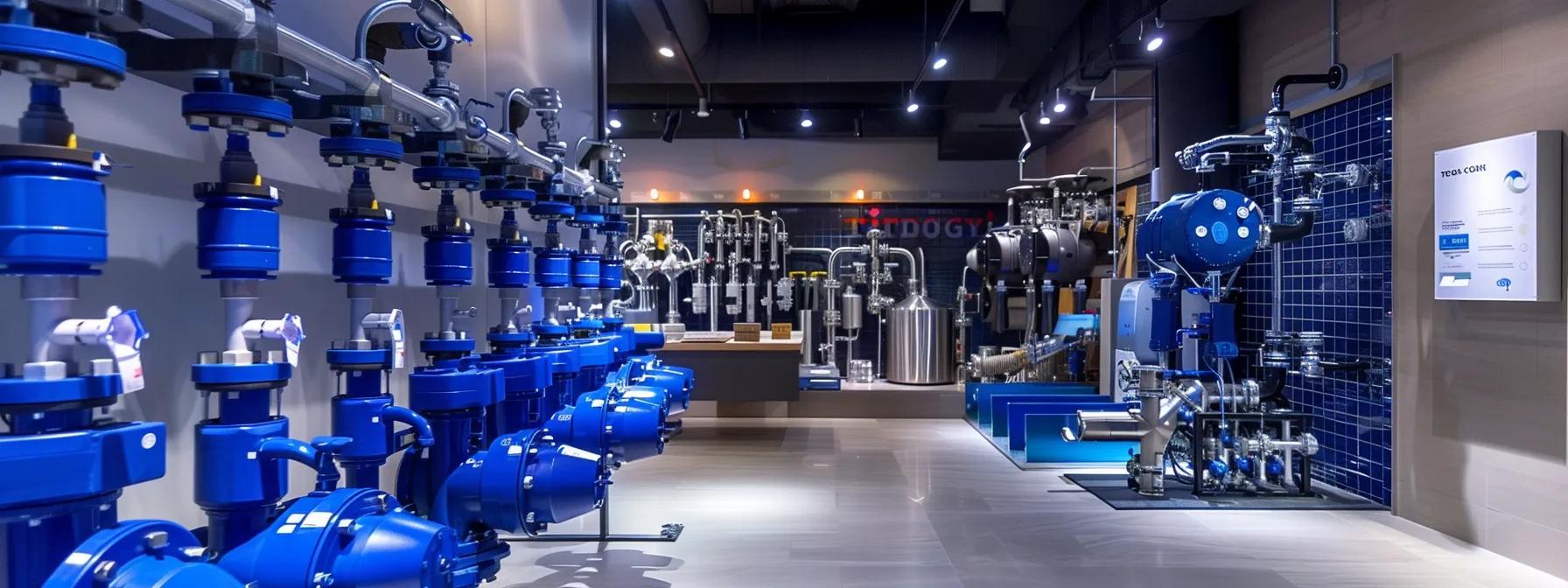
There are several types of hot water recirculating pumps available, each designed to meet different home configurations and user needs. Understanding these different types is crucial for homeowners seeking to upgrade their plumbing systems efficiently. The various models are distinguished by their operational controls (manual, timer-controlled, thermostat-controlled, and on-demand systems), as well as the specific architecture of the plumbing setup (full recirculation vs. comfort systems using existing cold water lines).
Examining Traditional Full Recirculation Systems
Traditional full recirculation systems utilize dedicated return lines to constantly circulate hot water from the heater through all piping junctions and back again. In these systems, a dedicated recirculating pump, often rated for continuous operation, is installed near the heater. The benefits of a full recirculation system include rapid access to hot water at any fixture and an overall reduction in water waste. This type of system is often recommended in large residential properties with extensive piping networks or in commercial applications where immediate hot water delivery at multiple outlets is critical. A major advantage is that the system can be custom-tailored using various pump models such as the Grundfos recirculation pump and Taco recirculating pump, ensuring compatibility with the unique layout of the property. Homeowners valuing efficiency and uninterrupted comfort tend to favour these robust, dedicated systems even though the initial installation costs can be higher due to the need for additional piping.
Understanding Comfort Systems Using Existing Cold Water Lines
Comfort systems represent a more cost-effective solution by repurposing existing cold water lines for hot water recirculation. Instead of installing a separate return line, this method utilizes a crossover valve to draw water from the cold water piping and mix it with the hot water supply. Although this design may not provide temperature levels as consistent as a full recirculation system, it offers a practical alternative for retrofit projects or homes where extensive plumbing modifications would be impractical. Comfort systems are particularly beneficial in older homes or apartments where the installation of new lines would be disruptive and expensive. By leveraging existing infrastructure, these systems still deliver many of the benefits of instantaneous hot water without requiring significant capital investment. The comfort system is an attractive option for homeowners who are conscious of water conservation and energy consumption without needing to overhaul their entire plumbing setup.
Comparing Timer Controlled Recirculating Pumps for Hot Water
Timer-controlled recirculating pumps operate on a predetermined schedule that aligns with the household's hot water usage patterns. Typically, these pumps run during peak hours in the morning and evening to ensure hot water availability when demand is highest. By limiting operation to specific periods, timer-controlled systems help reduce energy consumption compared to pumps running continuously. Such systems offer a balance between performance and efficiency, as they can be easily integrated with both traditional and comfort recirculation systems. Homeowners can program the timers according to their daily routines, ensuring that the water heater doesn't overwork during periods of low demand. The precise control provided by timer-based systems is especially valuable in modern smart homes and complements other energy-saving measures like tankless water heaters with recirculating setups. Overall, timer-controlled pumps offer an optimized balance between convenience and lowered operating costs.
Assessing Thermostat Controlled Hot Water Recirculation Pumps
Thermostat-controlled recirculating pumps offer an even more dynamic solution than timer-controlled systems by using real-time temperature monitoring to activate the pump. This type of pump turns on when the water temperature in the pipes drops below a defined threshold and shuts off once the desired heat level is restored. The precise control afforded by thermostat systems can maximize energy efficiency, particularly in homes with fluctuating hot water demands. In addition, thermostat-controlled pumps generally run for shorter periods than timer-based systems, reducing overall energy consumption and prolonging the lifespan of the pump components. Such systems are particularly attractive for environmentally conscious homeowners who want the best balance between performance and energy savings. The integration of these controls with modern heating systems ensures that the water recirculation process only occurs when absolutely necessary, further reducing the likelihood of overuse and unnecessary costs. Brands like Grundfos Comfort System have revolutionized this category by offering advanced models that combine sensor technology with intuitive user interfaces for easy adjustments.
Evaluating on Demand Recirculating Pump Options
On-demand recirculating pumps are designed to activate only when hot water is requested by the user, rather than running continuously or on fixed schedules. These systems use sensors on faucets or showers to detect when hot water is being drawn and then activate the pump to circulate heated water throughout the network. This method minimizes energy consumption because the pump operates only when a demand for hot water is made. On-demand systems are especially useful in homes with erratic usage patterns or for properties where continuous pump operation is neither necessary nor efficient. Although on-demand triggers can sometimes introduce a slight delay at the moment of activation, advances in sensor technology have largely mitigated such issues. Homeowners appreciate the energy savings and the system’s ability to adapt to varying water usage needs. Furthermore, on-demand recirculating pumps fit well with manual override controls, allowing users to adjust the system when needed for extended periods of high demand. This customization makes on-demand pumps a versatile solution that caters to both energy efficiency and user convenience.
Installation Process for Your Hot Water Recirculating Pump
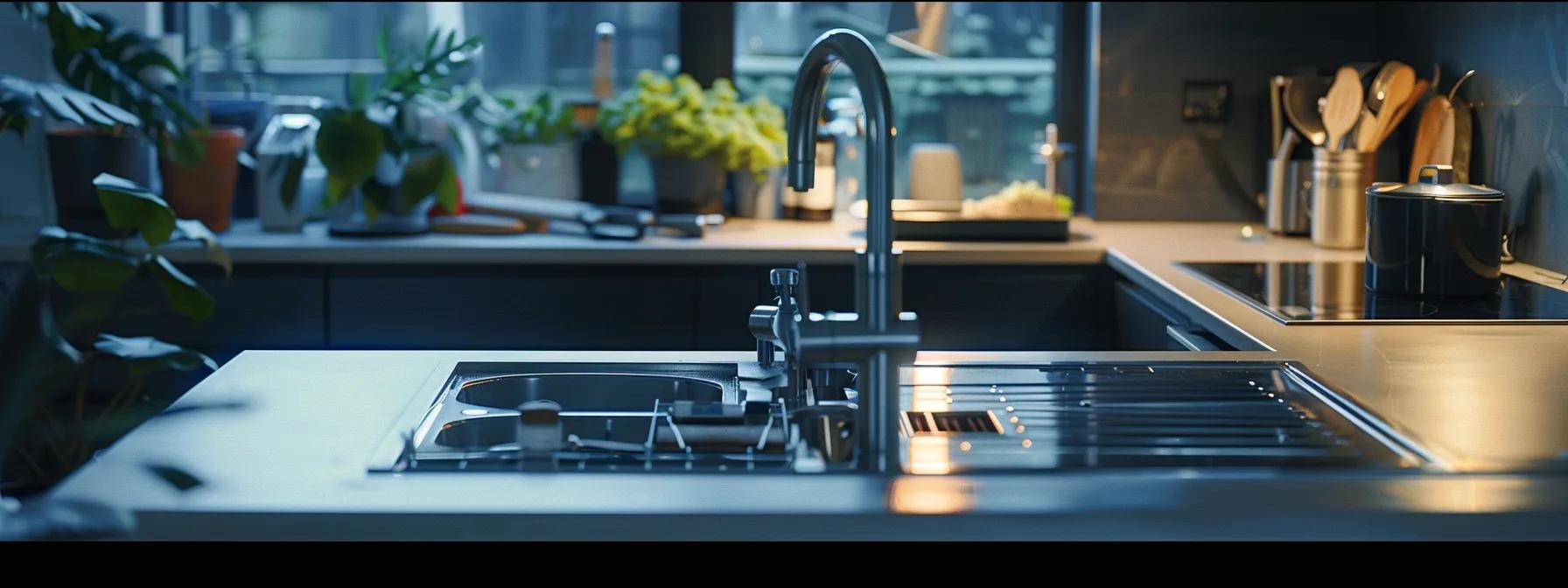
Proper installation of a hot water recirculating pump is essential for its optimal performance, longevity, and the overall efficiency of the hot water system. This section details the step-by-step process involved in assessing, installing, and testing the pump. Homeowners should follow the guidelines carefully and consider professional assistance if they are not well-versed in plumbing installations. Integrating a recirculating pump into the plumbing network can be a complex undertaking, but when installed correctly, it offers significant advantages in energy savings and water conservation.
Assessing Your Plumbing for Recirculating Pump Compatibility
Before installing a recirculating pump, it is crucial to evaluate the existing plumbing system. Homeowners should check whether their current hot water heater, piping materials, and layout can accommodate a recirculation loop. This assessment includes verifying that the pipes are in good condition and that there is space for the installation of additional components like return lines or crossover valves. Older homes might require modifications to integrate new technologies such as a Grundfos Recirculation Pump or a Taco Recirculating Pump, known for their durability and efficiency. Evaluating the distance between the water heater and the fixtures, and considering factors such as the diameter and type of piping (e.g., steel, copper), will help determine the most suitable pump model and installation method. Homeowners should consult technical manuals and, if necessary, obtain professional piping diagrams to ensure compatibility and streamline the installation process. This preliminary check is critical for preventing future issues and ensuring that the investment in a recirculating pump yields maximum benefits.
Essential Tools and Materials for Pump Installation
The installation of a hot water recirculating pump requires a variety of tools and materials to ensure a secure and efficient setup. Essential items typically include adjustable wrenches, pipe cutters, silicone sealant, Teflon tape, and appropriate fittings and connectors tailored to the piping material, whether steel or copper. Depending on the system design, additional components such as dedicated return lines, crossover valves, or even sensor modules for thermostat-controlled pumps might be necessary. Ensure that all parts, including the pump itself and any recommended accessories from established brands like Grundfos comfort system or laing recirculating pumps, are obtained before beginning the project. Gathering all materials and checking for compatibility with the existing plumbing can prevent installation delays. Detailed installation manuals and model-specific instructions are often available from manufacturers or plumbing service providers and should be followed precisely to guarantee a correct setup.
Step by Step Guide to Setting Up Your Recirculating Pump
Once compatibility has been confirmed and materials have been gathered, the installation process unfolds in several key steps. First, shut off the water supply to the water heater and drain the system to minimize the risk of leaks or spills. Next, install the pump according to the manufacturer’s guidelines, connecting it to the designated hot water line and, if applicable, to the return line or crossover valve. The pump should be securely mounted using brackets or clamps to prevent vibrations or movement that could affect its performance. After installation, carefully reassemble any disconnected piping sections using appropriate sealants and Teflon tape to ensure leak-free connections. Once all connections are secure, re-open the water supply and test the system by activating the pump and verifying that hot water is instantly available at multiple outlets. If the pump includes sensor or timer features, configure these settings in accordance with your household’s schedule and water usage patterns. A thorough inspection for leaks and proper synchronization between the pump and the water heater is essential. Following these steps carefully will help ensure that the pump operates at peak efficiency and delivers on the promise of enhanced water and energy conservation.
Professional Installation Versus DIY for Recirculating Pumps
Deciding between professional installation and do-it-yourself (DIY) depends largely on the complexity of the existing plumbing system and the homeowner’s experience with plumbing projects. Professional installers, often certified by manufacturers like Taco or Grundfos, bring expertise that ensures every aspect—from assessing the piping to testing the system—is executed correctly. They can provide guidance on the most energy-efficient settings and guarantee compliance with local plumbing codes. DIY installation may be feasible for those with prior plumbing experience and access to quality installation guides; however, improper installation can lead to system inefficiencies, leaks, or even damage to the water heater and pipes. Homeowners should weigh the costs of professional service against the potential savings realized by correct, long-term operation of the recirculating pump. In many cases, the modest cost of professional installation can rapidly be offset by the improved performance and increased longevity of the system, making it a prudent investment for enhancing home comfort and reducing energy consumption.
Initial Testing and Calibration of Your New Pump
After installation, crucial steps include thorough testing and calibration of the recirculating pump. Initiate the testing process by checking all connection points for potential leaks with the water supply gradually reintroduced. Monitor the activation of the pump through its sensor or timer settings to ensure it responds correctly when hot water is requested. Calibration may require adjustments to the thermostat settings to guarantee that the pump activates at optimal temperatures, ensuring that all outlets receive hot water instantly. Testing the complete system, including listening for abnormal noises and verifying flow rates at various fixtures, helps in assessing overall performance. This initial testing period is essential for validating the installation and ensuring that the system performs according to manufacturer specifications. Documenting the performance during these preliminary trials can also assist in future troubleshooting and maintenance. Once verified, the system should offer homeowners an immediate, efficient source of hot water, thus fulfilling the promise of decreased water waste, improved energy efficiency, and enhanced daily comfort.
Maintaining Your Hot Water Recirculation Pump for Longevity
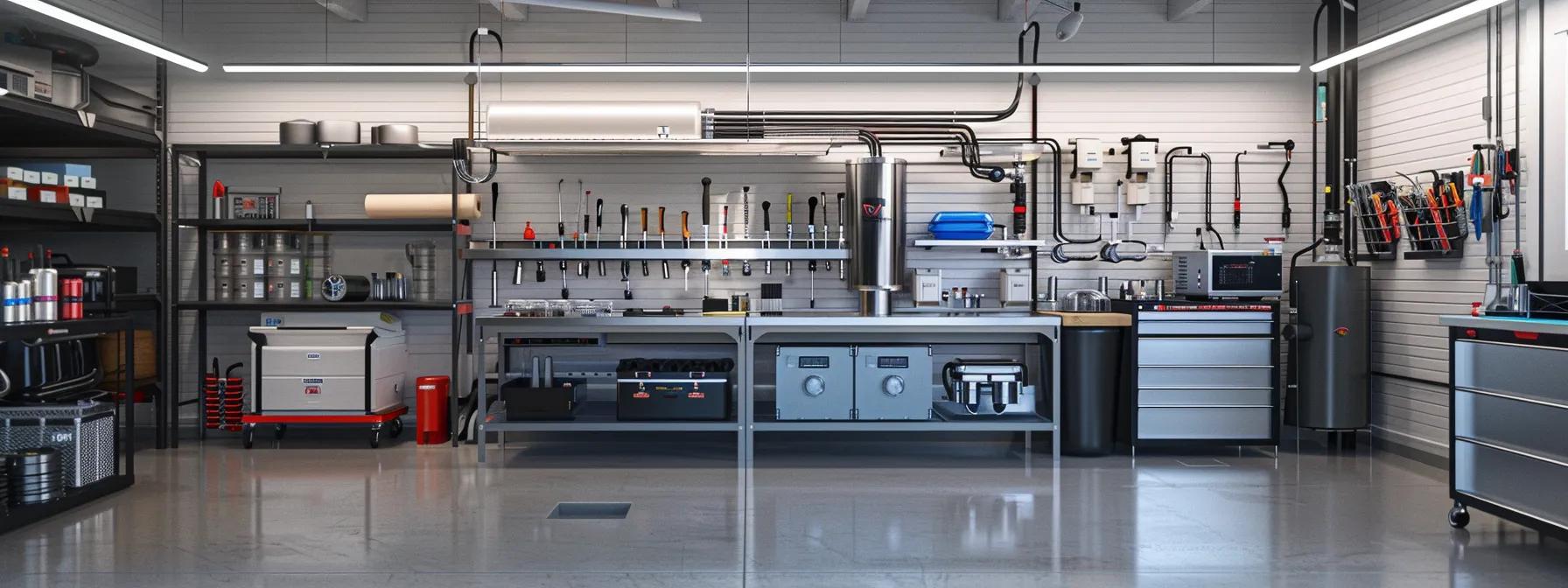
Once a hot water recirculating pump is installed, regular maintenance is key to ensuring optimal performance and extending the lifespan of the overall water heating system. Proper maintenance helps avoid common issues such as leaks, sensor malfunctions, and mechanical wear. This section outlines various inspection routines, troubleshooting techniques, and professional repair guidelines that homeowners should consider to protect their investment.
Routine Checks for Optimal Pump Performance
Routine checks are essential to keep a recirculating pump running efficiently. Regularly inspect the pump, valves, and connecting pipes for any signs of wear or damage. This includes checking for leaks at connection points and ensuring that the sensors or timers are still adequately calibrated. Homeowners should also monitor energy consumption and water temperatures to detect any deviations from the expected performance levels. Annual or semi-annual servicing by a certified technician can help identify minor issues before they develop into major problems. By maintaining detailed records of each maintenance activity, homeowners can track the system’s performance over time and schedule inspections during seasons of heavy usage. It is recommended to follow the maintenance schedule provided by the pump’s manufacturer—whether using a Taco recirculating pump or a Grundfos comfort system—to ensure that all components function optimally. Routine maintenance not only preserves the pump’s internal mechanism but also ensures that the water heating system remains as energy efficient as possible.
Identifying Common Issues With Recirculating Pumps for Hot Water
Common issues with recirculating pumps typically include noise, leaks, and inconsistent water temperature. A noisy pump may indicate that bearings or impellers require lubrication or replacement. Leaks are often caused by dryer seals or loose fittings; these issues should be addressed immediately to avoid water damage or decreased system efficiency. Additionally, if the water temperature fluctuates or fails to reach the desired set point, it could signal problems with the thermostat or sensor components. Homeowners should be aware of these symptoms and conduct periodic inspections to catch early signs of malfunction. Often, these issues can be resolved with simple repairs like tightening connections, replacing worn seals, or recalibrating the thermostat settings. Understanding the root cause of these issues is essential for prompt and effective troubleshooting. Detailed diagnostic charts provided by manufacturers, along with technical support from professional plumbing services, can guide homeowners through solving these challenges. Early detection and correction of common issues like these ensure that the pump continues to operate reliably and efficiently.
Troubleshooting Simple Problems With Your System
Troubleshooting can often be accomplished by systematically checking each component of the recirculating pump system. Homeowners are advised to start by verifying that the water supply is fully restored and that no air locks exist in the pipes. Once the basic circulation is confirmed, the next step is to examine the sensor and timer settings to ensure the pump is operating on the desired schedule. For issues like minor leaks or noise, simple fixes such as applying Teflon tape or tightening connections can usually resolve the problem. Additionally, reviewing the pump’s operational manual can provide guidance on error codes or diagnostic signals that may indicate a deeper issue. Homeowners should also consult troubleshooting guides available from reputable manufacturers, ensuring that any problem is addressed before it leads to larger inefficiencies. While minor issues can typically be handled independently, any persistent or unusual symptoms should prompt a call for professional assistance to prevent further damage.
When to Call a Professional for Pump Repair
While many basic maintenance tasks can be performed by a knowledgeable homeowner, there are specific situations where professional pump repair is warranted. Persistent leaks, unusual vibrations, or electrical issues with the pump’s control system should prompt immediate service from a certified plumbing technician. Professional repairs are especially critical when dealing with integrated components like advanced thermostat or sensor modules that control the pump’s operation. In such cases, a misdiagnosis or incorrect fix might compromise the efficiency of the entire hot water recirculation system. It is also important to have experts service the pump if it is part of an interconnected system tied to a tankless water heater with recirculating capabilities. Calling a professional ensures that the repair work meets safety codes and maintains the warranty provided by manufacturers such as Grundfos, Taco, or Laing. Expert diagnostics can often pinpoint subtle issues that might otherwise be overlooked, and professional servicing will extend the overall lifespan of the system.
Tips to Extend the Lifespan of Your Hot Water Pump
To maximize the lifespan of a recirculating pump, homeowners are encouraged to adopt a proactive maintenance strategy. Periodic lubrication of moving parts, regular cleaning of intake and output filters, and adherence to manufacturer-recommended maintenance schedules are critical steps. In addition, insulating the pipes helps minimize heat loss, reducing the load on the pump and water heater. Installing a water softener in areas with hard water can prevent scale buildup, which can otherwise cause premature wear on the pump’s components. Furthermore, scheduling annual check-ups by a certified technician ensures that any developing issues are addressed before they require costly repairs or replacement. Adopting these strategies not only prolongs the pump’s effective lifespan but also contributes to sustained energy savings and consistent user comfort for years to come.
Frequently Asked Questions
Q: How do hot water recirculating pumps save water? A: Hot water recirculating pumps save water by eliminating the wait time needed for hot water to reach a faucet, thereby reducing the amount of cold water wasted while waiting.
Q: Can recirculating pumps be installed in any home? A: Most homes can incorporate recirculating pumps, but an assessment of the plumbing layout is necessary to ensure compatibility with existing systems, especially in older properties.
Q: What maintenance is required for a hot water recirculating pump? A: Regular inspections, filter cleaning, checking for leaks, sensor recalibration, and annual professional servicing are recommended to maintain optimal system performance.
Q: Are there energy savings associated with using these pumps? A: Yes, by reducing the frequency of the water heater’s operation, recirculating pumps can lower energy consumption, leading to notable utility bill savings.
Q: How long does a recirculating pump typically last? A: With proper maintenance, high-quality pumps can last over 10 years; factors such as water quality and usage patterns may affect longevity.
Q: Is professional installation necessary? A: While some homeowners with plumbing experience can perform the installation, professional installation is recommended to ensure all components are correctly integrated and functioning.
Final Thoughts
Hot water recirculating pumps play a vital role in enhancing home comfort by delivering instant hot water while promoting water conservation and energy efficiency. The various systems available—traditional full recirculation, comfort systems using existing lines, timer-controlled, thermostat-controlled, and on-demand setups—offer numerous options to meet the diverse needs of modern households. When installed and maintained properly, these systems not only reduce water waste and lower energy bills but also prolong the lifespan of the entire plumbing network. Homeowners interested in boosting efficiency and ensuring immediate hot water access should consider upgrading to a recirculating pump system.
FeatureDescriptionBenefitExample/BrandDedicated Return LineUses an extra piping loop to continuously circulate hot waterInstant hot water availabilityTraditional full recirculationCrossover ValveRepurposes existing cold water lines for recirculationCost-effective retrofitComfort system designTimer-Controlled ActivationOperates on a pre-set schedule during peak usage hoursReduces energy consumptionAdvanced timer-based systemsThermostat-Controlled OperationActivates pump based on real-time water temperature monitoringOptimizes energy efficiencyGrundfos comfort systemOn-Demand ActivationActivates only when hot water is required at a fixtureMinimizes unnecessary pump operationSensor-equipped recirculating pumps
The table above summarizes the key features, their descriptions, benefits, and examples from popular brands used in hot water recirculation systems. This concise overview can help homeowners quickly understand the different options available on the market.
Hot water recirculation technology, when combined with quality components and proper maintenance, ensures an efficient, eco-friendly, and comfortable home environment. Homeowners who invest in these systems enjoy not only immediate hot water at every tap but also long-term savings on water and energy bills.
Frequently Asked Questions
Q: What types of recirculating pumps are best for homes with long pipe runs? A: For homes with long pipe runs, a traditional full recirculation system with a dedicated return line is ideal, as it ensures consistent hot water delivery across distant fixtures.
Q: How do sensors contribute to recirculating pump efficiency? A: Sensors monitor water temperature in real time and activate the pump only when necessary, reducing energy use and operational costs while preventing over-circulation.
Q: Can I install a recirculating pump on my own, or should I hire a professional? A: While experienced DIYers may handle installation, professional installation is recommended to ensure correct setup, adherence to local plumbing codes, and proper integration with existing systems.
Q: Do recirculating pumps work with tankless water heaters? A: Yes, many modern recirculating pump systems are compatible with tankless water heaters, providing instant hot water while ensuring energy efficiency in both systems.
Q: What maintenance schedule is recommended for recirculating pump systems? A: Routine checks every few months, along with annual professional servicing, are recommended to maintain optimal performance and identify any potential issues early.
Q: Are there any additional benefits to using a recirculating pump beyond water and energy savings? A: Aside from conservation benefits, recirculating pumps enhance overall convenience by providing immediate hot water, thereby reducing wait times and preventing potential pipeline damage from repeated temperature fluctuations.
Final Thoughts
Hot water recirculating pumps deliver a robust solution for homeowners seeking to combine comfort with energy and water conservation. From dedicated return line systems to more cost-effective comfort systems, these devices ensure immediate hot water delivery and lower utility costs. With proper installation and regular maintenance, the long-term benefits include preserved plumbing integrity and enhanced household efficiency. Homeowners ready to upgrade their water heating systems can benefit immensely from understanding and investing in the right recirculation solution.